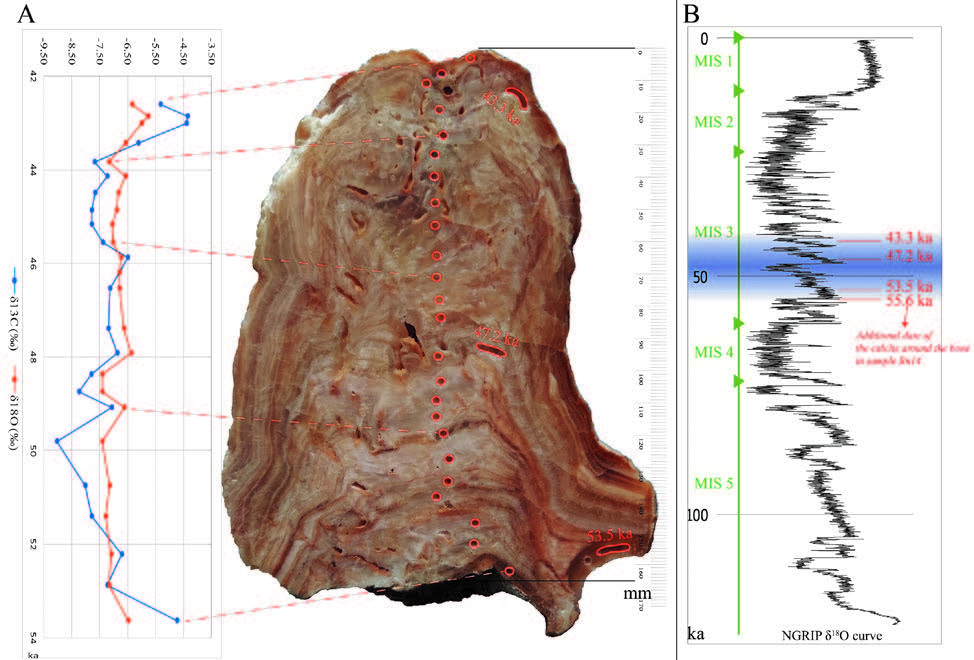DNA, spectroscopic and geochemical analyses of bone fragments and associated speleothems in Postojna cave, Slovenia
DOI:
https://doi.org/10.3986/ac.v49i2-3.7970Keywords:
palaeoclimate, stalagmite, Ursus, karst, palaeontology, cave bear, deoxyribonucleic acidAbstract
a loose/broken stalagmite containing small fragments of cemented bones were collected from the Postojna Cave to investigate whether deoxyribonucleic acid (DNA) can be determined. The study is complemented by the Fourier-transform infrared spectroscopy - attenuated total reflectance (FTIR-ATR) analysis in order to determine the alteration of the bones and to test whether this analysis can be used as an indicator of possible DNA preservation. In addition, geochemical analyses were conducted in order to determine whether the associated flowstone/stalagmite is suitable for elucidating the timing of bone thanatocoenosis and further palaeoenvironmental analyses. The organic matter (collagen) is poorly preserved. However, we succeeded in amplifying a 94 bp long fragment of the cytochrome b (Cyt b) gene of mitochondrial DNA (mtDNA) in polymerase chain reaction (PCR) for one sample, and in sequencing the amto that of the Cyt b of the cave bear (Ursus deningeri or Ursus spelaeus sensu lato). The uranium-thorium dating of the speleothem covering the bones revealed its thanatocoenosis occurred prior to 55 ka, most likely in the late marine isotope stage 4 or early marine isotope stage 3. High porosity and recrystallisation of the flowstone/stalagmite at this part of the cave prevent high-resolution palaeoclimatic interpretation; however, low-resolution stable isotope geochemistry suggests a steppe-like environment during the subsequent growth of the speleothem.
Downloads

Downloads
Published
How to Cite
Issue
Section
License

This work is licensed under a Creative Commons Attribution-NonCommercial-NoDerivatives 4.0 International License.
Authors guarantee that the work is their own original creation and does not infringe any statutory or common-law copyright or any proprietary right of any third party. In case of claims by third parties, authors commit their self to defend the interests of the publisher, and shall cover any potential costs.
More in: Submission chapter




